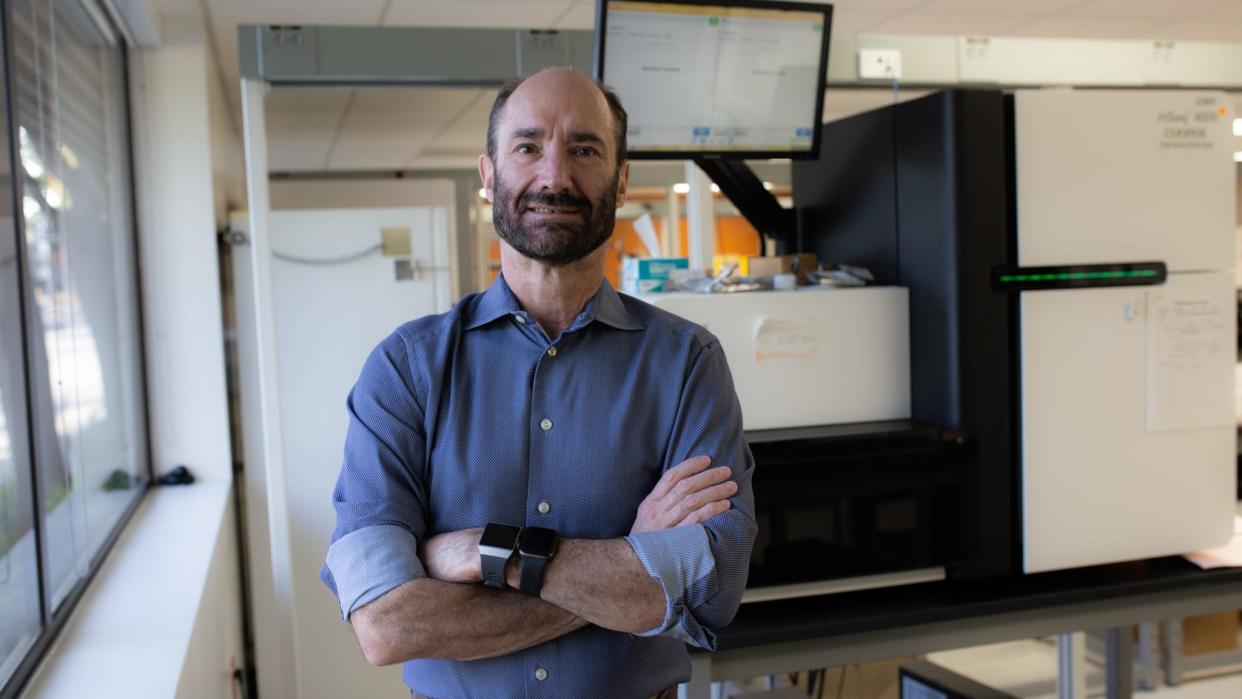You could say Michael Snyder is obsessed with learning about the inner workings of his own body. The Stanford University geneticist once tracked himself as he developed diabetes.
Now, in a new paper, he took repeated blood samples every day for a week – 14 a day, 98 times in total. He used a new method he and his team developed, using a drop collected from a finger prick rather than vial after vial taken from the crook of his arm.
The study, published Thursday morning, showed Snyder and his colleagues were able to get nearly the same results as a typical blood draw from a sample 1,000-times smaller.
In addition to learning more about his own biology, Snyder thinks it offers a new way of tracking health measures and eventually might replace getting blood drawn at the local doctor’s office. Such microsampling, he said, is convenient, can be done more frequently than an annual or semi-annual blood draw, and doesn’t require visiting a clinic with sick people.
“I think it’s going to take over the way we do health monitoring,” Snyder said.
Dr. Eric Topol, founder and director of the Scripps Research Translational Institute, who is not involved in the work, said the sampling is provocative, but not yet ready for widespread use.
“It’s an unprecedented depth of data collection,” Topol said. “Whether that’s useful is another question.”
‘It’s Theranos that works’
Snyder compared the technology to the thoroughly discredited approach by the company Theranos, whose former CEO and president are now sentenced to prison.
“It’s Theranos that works,” Snyder said of his own technology.
Theranos also used a drop of blood, but in Snyder’s approach, blood is shipped to a conventional lab that sorts molecules based on their mass and electronic charge, while Theranos promised a new analytical process that never worked.
Other companies are currently developing blood tests based on a single drop, but Snyder envisions his being conducted more regularly at home, rather than during an occasional doctor’s visit.
‘The Dropout’ review: Amanda Seyfried nails Elizabeth Holmes, but series still clouds her mystery
What the study found
Snyder and his colleagues examined a broad range of factors from each sample, including those involved in metabolism, the immune system, blood sugar and other health measures.
In his own samples, he was able to see how his body metabolizes aspirin and how long it takes for his glucose to spike after eating, which is useful for someone like him with diabetes.
He saw an association between his caffeine consumption and poor sleep. “Now I have a little less and try and stop earlier,” he said, though he’s not sure whether it’s making a difference.
The researchers also examined the blood of 28 people four hours after they drank a bottle of the nutritional shake Ensure. One group, perhaps those with insulin resistance, responded very quickly to the drink and in some it increased their levels of inflammation, suggesting it was not doing them good.
Others processed the shake more slowly and in some, markers of inflammation fell, suggesting it provided a benefit. Knowing what foods cause or reduces inflammation “would be very, very powerful,” Snyder said, helping people make more personalized decisions about which foods to eat or avoid.
What are the challenges?
Snyder has launched two companies based on the research: RTHM, which is using the approach to look at long COVID, and Iollo, a metabolic testing company that is working to make these blood tests publicly available. It’s unclear how much the test will cost.
But computer technology can’t yet thoroughly analyze such a complex set of data collected repeatedly, Topol said, and not everyone will want to draw their own blood or mail it in.
“This is alluring,” Topol said, but “this is very involved for the person. It’s expensive. These practical issues are going to have to be validated that it’s worthwhile.”
What’s the potential for this kind of bloodwork?
Wearable devices, like watches, focus on collecting physical parameters, while the molecular information available from Snyder’s method “is critical for personalized health monitoring,” said Wei Gao, an assistant professor of medical engineering at the California Institute of Technology, via email.
“This technology provides a feasible way to collect rich molecular information in people’s daily life using easily accessible finger prick blood draw,” Gao said.
Snyder said this approach could eventually be used to track stress, watch for early signals of disease and see which foods are problematic for which people.
He and his team have already begun tracking patients with chronic fatigue syndrome, also called myalgic encephalomyelitis, to see what triggers their bouts of exhaustion and identify signs of an impending crash.
They are also getting ready to launch a study looking at how the “exposome” – the pollution, chemicals, bacteria, pollen and mold in the environment – affect someone’s blood chemistry.
“I could see nearly all blood tests being run from the (person’s) house in the future,” Snyder said. “It just makes sense.”
More health news from USA TODAY
Animal testing no longer required for drug approval
Childhood vaccination rates drop as measles, polio outbreaks emerge
Why new obesity guidance for children is drawing scrutiny.
Contact Karen Weintraub at [email protected].
Health and patient safety coverage at USA TODAY is made possible in part by a grant from the Masimo Foundation for Ethics, Innovation and Competition in Healthcare. The Masimo Foundation does not provide editorial input.
This article originally appeared on USA TODAY: How Stanford’s Michael Snyder is using a drop of blood to track health
Source: Read Full Article
